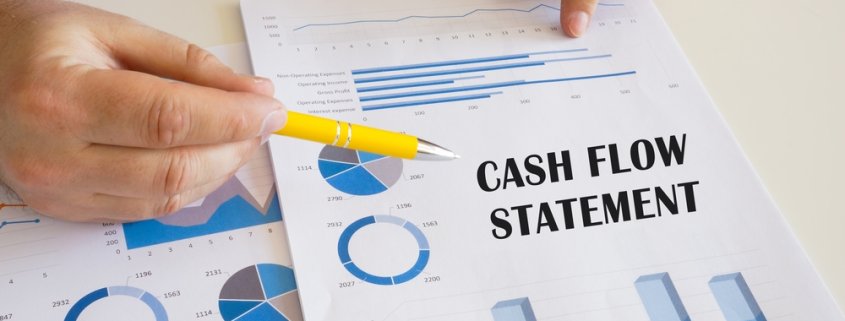How to Analyze a Cash Flow Statement
Last Updated May 7, 2024
When it comes to your business’s financial health, few documents can be more helpful than a cash flow statement. These statements can help guide your cash flow management, giving you greater insight into how your business is earning and spending money. With this information, you can take steps to improve your cash flow and the overall health of your business.
Because of this, understanding how cash flow statements work and how to read a cash flow statement should be top priorities for any business owner. Keep reading to find out what you need to know.
What Is the Purpose of a Cash Flow Statement?
The purpose of a cash flow statement is to track the inflow and outflow of cash for your business during a specific time period (such as a month, quarter, or even year). This includes cash flow from operating activities, investing activities, and financing activities.
With the information on a cash flow statement, business owners can quickly determine whether their business has a positive or negative cash flow, and which activities are contributing to the current cash flow balance. The cash flow statement helps business owners understand if they are generating enough cash to fund their operations and repay debts, as well as what changes should be made to improve cash flow.
Understanding the Main Components of a Cash Flow Statement
So, what does a cash flow statement show? The main components of a business’s cash flow can be broken into three categories: operating activities, investing activities, and financing activities.
Cash Flow from Operating Activities
Operating activities on a cash flow statement cover the items that most people think of regarding a business’s cash inflows and outflows—namely the day-to-day business activities for a company.
Common sources of cash generation in this category include cash received from customers for products or services, as well as interest received on investments or savings. Common expenditures include employee salaries and wages, payments to suppliers, utilities expenses, and income tax payments.
Cash Flow from Investing Activities
Investing activities on a cash flow statement don’t just relate to stocks and bonds, though they can certainly be a part of this too. Rather, investing activities on a cash flow statement primarily cover the purchase of non-current assets that are expected to deliver long-term value.
Capital expenditures such as purchasing fixed assets (like new equipment or retail space), buying stocks or securities, or lending money represent a short-term “loss” in terms of cash flow with a likelihood for long-term gains. Investing activities that result in positive cash flow include selling fixed assets or investment securities and collecting on loans.
Cash Flow from Financing Activities
Financing activities on a cash flow statement typically include taking out a loan from a bank or other lending institution, repayment of existing loans, stock repurchases, and bond offerings. For most small businesses, financing activities are focused on taking out loans and making loan payments.
How to Analyze a Cash Flow Statement
With the right information added from the three primary categories, you can then analyze the numbers to get a better idea of the overall financial health of your business. Here’s how to analyze a statement of cash flows.
Note the Opening and Closing Balance
Start by noting the opening and closing balance on your cash flow statement. The opening balance is how much total cash your business had at the start of the month (or other accounting period). The closing balance is how much cash was left at the end of the month after accounting for all revenue and expenses.
This information can easily be obtained through bank and other financial account statements and will quickly tell you if you gained or lost money during the statement period.
Find Net Cash Flow
You can then use the opening and closing balance to find your net cash flow for the period you’re measuring. Simply take the closing balance and subtract the opening balance to determine your net cash flow for your business. Alternatively, you can measure net cash flow by taking your total cash inflows and then subtracting the total cash outflows.
Analyze Cash Flows from Operations, Investing, and Financing
With cash flow information documented from operations, investing, and financing, you can more closely examine whether cash flow in each of these areas was positive or negative. Breaking down income and expenses will help you identify potential areas of concern for the business, such as a decrease in operating revenue compared to the previous month.
Determine Free Cash Flow
You can also use your cash flow statement to determine your business’s free cash flow. Free cash flow isn’t as encompassing as net cash flow, but it can still be a helpful measurement of your company’s financial health and how much cash you have readily available to handle business needs.
Free cash flow can be expressed as the following formula:
Net Income + Depreciation/Amortization – Change in Working Capital – Capital Expenditure = Free Cash Flow
What a Cash Flow Statement Analysis Reveals
A key part of how to understand a cash flow statement is knowing what positive vs. negative cash flow means for your business. A cash flow statement offers both a high-level reveal of your cash flow status, as well as the opportunity to dig deeper into the reasons behind the numbers.
This is especially true when you compare the current cash flow statement to the previous month or year. These comparisons can help you get an idea of the direction of your business’s finances, as well as identify what changes have led to improvements or cash flow challenges.
Positive Cash Flow
If you have positive cash flow, it means your business’s revenue is greater than its expenses. In a perfect world, this is where your business would be on a regular basis. A positive cash flow means you have extra money that can be invested back into the business for things like opening a new location or hiring additional staff. For seasonal businesses, periods of positive cash flow are essential for building up a reserve for less busy months when revenue decreases.
Positive cash flow ultimately means your company is operating in a healthy and sustainable manner and, if desired, you can invest in additional growth. Just be wary of unsustainable practices, such as when positive cash flow comes from taking out large loans, rather than from operations.
Negative Cash Flow
Negative cash flow isn’t always a bad thing. For example, it isn’t unusual for seasonal businesses to experience periods of negative cash flow or for a company to experience temporary negative cash flow periods after making a large investment on an asset that will improve its products or operations in the long term.
However, extended periods of negative cash flow are a definite cause for concern, as this means that expenses are outpacing revenue. The company in question is likely suffering from unsustainable business practices and spending more than it should. Eventually, this can cause a company to go bankrupt. It will also make it harder for the business to get a loan, as lenders will often use the cash flow statement to determine your ability to repay.
In-Summary: How to Analyze Your Cash Flow Statement
A proper cash flow statement analysis involves noting the opening and closing balance, finding net cash flow, categorizing cash flows into operating, investing and financing activities, and determining free cash flow.
Making a habit of creating a cash flow statement and analyzing findings will put you in the best position to achieve long-term success that can be sustained even when potential unexpected financial obstacles get in your way.
Cash Flow Statement Analysis FAQs
How do you tell if a cash flow statement is good or bad when analyzing it?
When analyzing a cash flow statement, you want to see if your business has positive or negative cash flow. Positive cash flow means you are bringing in more money than you are spending, while negative cash flow means you are outspending your earnings. Ongoing positive cash flow indicates that you are operating from a more secure financial position.
How often should a business owner prepare and analyze a cash flow statement?
Generally speaking, it is recommended that business owners prepare and analyze cash flow statements on a monthly basis. This makes it easier to keep track of a company’s financial situation and progress toward financial goals.
How do you know if a cash flow statement is correct?
You can ensure the accuracy of your cash flow statement by reviewing your income statement and balance sheets for the period you wish to measure. Make sure that all payments and expenses are properly categorized, and use bank statements to confirm cash flow numbers. Make sure that all revenue and outgoing payments are accounted for. Accounting tools that automate the process can help reduce the risk of mathematical errors.
What are some examples of cash from operating activities on a cash flow statement?
Operating activities on a cash flow statement could include cash payments from customers, interest income, salary payments to employees, cash payments to vendors, and income tax payments.
What are some examples of cash from investing activities on a cash flow statement?
Cash from investing activities may include purchasing or selling physical assets and securities investments. Purchases of long-term or non-current assets are typically considered investing activities.
What are some examples of cash from financing activities on a cash flow statement?
Common financing activities on a cash flow statement include repayments on existing loans, taking out a loan with a financial institution, stock repurchases, bond offerings, and dividend payments.
Michael McCareins is the Content Marketing Associate at altLINE, where he is dedicated to creating and managing optimal content for readers. Following a brief career in media relations, Michael has discovered a passion for content marketing through developing unique, informative content to help audiences better understand ideas and topics such as invoice factoring and A/R financing.




